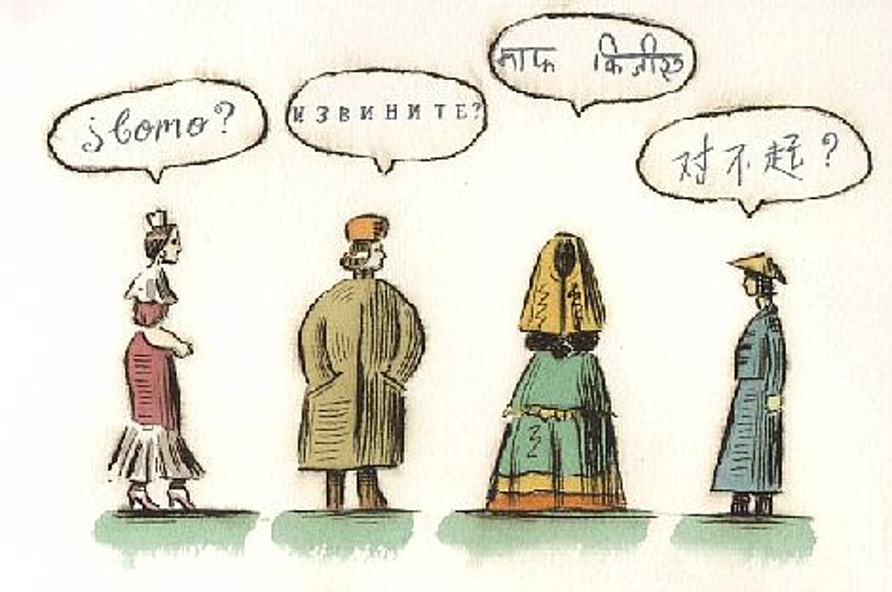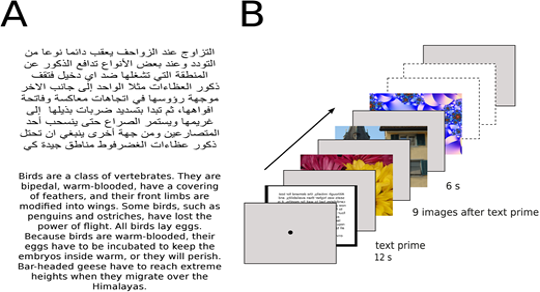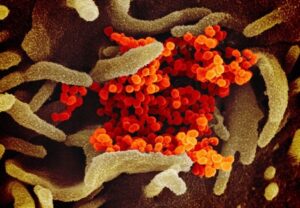
Figure 1: The Influence of Language on the Perception of the World
Source: http://www.lausti.com/articles/internet/languages.jpg
The Sapir-Whorf Hypothesis theorizes that the structure of a language determines a native speaker’s perception and interpretation of every experience they have. This paper will examine this hypothesis closely and take a deep look at how a person’s language can influence their perception of the world.
The Sapir-Whorf Hypothesis was first formulated by American linguist E. Sapir in his 1929 essay “The Status of Linguistics as a Science,” which warned that the science of linguistics may have deep implications for the interpretation of human conduct. In 1940, another American linguist, B.L. Whorf reformulated the hypothesis in his essay “Science and Linguistics” to what it is today, a theory on how the language in which we think determines the character of our thoughts. Their combined theory was called the Sapir-Whorf hypothesis, and quickly became highly controversial, as it implied that speakers of different languages perceive the world in different ways. Many feared that if reality is uniquely perceived according to spoken language, then an “objective” world does not exist. Sapir responded to this criticism by saying that his theory doesn’t directly link language to objective reality. He instead argues that an objective reality exists, but objective perception does not. The subjectivity of perception is shaped by language; therefore, people who think in different languages perceive the world differently. Whorf also added that language does not completely determine a person’s worldview, but no individual can describe the world objectively. Consequently, when any two people are presented with the same reality, they will never observe the same picture of the universe; but their picture will be most similar if their linguistic backgrounds are similar (Hussein, 2012).
Through various studies, cognitive scientists have been able to determine that differences in language have effects on perception. A 2016 study by Cibelli et al. examined the Sapir-Whorf hypothesis through the lens of cognition and perception of color. The study consisted of three experiments that were analyzed and fitted to models to find language discrimination in color recognition and memory. The second experiment in this study focused on color discrimination across languages by using a two-alternative forced choice (2AFC) task. In a 2AFC task, the participant is shown a color briefly then shown two colors side-by-side, one being the original and the second being a distractor color. Three languages were used in this study: English, Berinmo and Himba, a language of Papa New Guinea and Namibia respectively. After analysis, this experiment found that each language had very distinct categories for colors in the range of dark yellow to purple. When the distractor color and the original color were in the same color category in the participant’s language, they made far more mistakes when identifying the original color than when it was not. This result suggests that the perception of color is very different for people of different linguistic backgrounds since the linguistic categorization of color allowed real-life discrimination or blending of various areas of the visible spectrum (Cibelli, 2016).
Another study, conducted by He et al. in 2019, shows a different way in which language differences lead to color perception differences. In this paper, Mongolian-speaking and Mandarin-speaking participants performed two tasks. One was a free-sorting task, where a participant is given objects and is allowed to sort without direction. The other was as a visual search task, where a participant’s eye movements are recorded as they scan an image. Mongolian and Mandarin speakers were chosen for this study because of the color differences and similarities in these languages for the green-blue spectrum. In Mongolian, light blue (“qinker”) and dark blue (“huhe”) are strictly distinct, while green, regardless of shade is described as one word, nogvgan. In Mandarin, however, blue is described by one word, lán, and green is described by one word, lǜ .
In the free sorting task, Mongolian speakers exhibited a clear distinction between light and dark blue but the same sorting in the green region, while Mandarin speakers did not show a distinction in either category. In the visual sorting task, both Mandarin and Mongolian speakers reacted faster to the green color than the blue color, suggesting that some aspects of human color perception may be universal. However, Mongolian speakers discriminated against visual search displays, or were able to tell the two colors apart, when the colors fell into different linguistic categories, qinker or huhe, quicker than visual search displays that belonged to the same linguistic category, both displays being qinker. This discrimination effect was also disrupted in Mongolian participants who were asked to perform a secondary task that engaged verbal working memory, the part of the brain that keeps verbal information online and ready for use, but not when the task engaged spatial working memory, the part of the brain that keeps spatial information online and ready for use, this is likely due to the fact that verbal working memory takes up linguistic resources while spatial working memory does not. This difference in secondary task interference further suggests a linguistic root to the color discrimination and the effect of linguistic interference. In contrast, Mandarin speakers performing the visual search task did not show any category advantage under any of the conditions in the experiment (He, 2019). Overall, this experiment supports the Sapir-Whorf hypothesis by strongly suggesting that language usage affects an individual’s perception of colors.

Figure 2: (A) Visual search of the blue colors used; B1-B2 and B3-B4 are within-categories, while B2-B3 are between-categories. (B) Visual search of the green colors used; G1-G2 and G3-G4 are within-categories, while G2-G3 are between-categories. (C) Sample display for the visual search task
Source: He, 2019
While color is a key part of perception, the Sapir-Whorf hypothesis theorizes that all of perception is influenced by one’s language. To expand on this concept, researchers have studied the direction of reading and spatial arrangement in relation to language. A study done by Shaki and Fisher in 2008 examined the horizontal spatial-numerical association of response codes (SNARC) effect, the placement of smaller numbers in the left space of the visual field and big numbers in the right space of the visual field, in bilingual Russian-Hebrew readers. This study found that after reading Cyrillic script, read from left-to-right, the SNARC effect was present for all of the participants. After reading Hebrew script, right-to-left, however, the effect was significantly reduced. Surprisingly, even after just listening to texts in Russian or in Hebrew the same effect was present (Shaki, 2008). These results not only show that reading direction influences spatial arrangement in perception but also that the activation of a certain language – for example, reading the Russian language versus reading the Hebrew language – will switch a person’s mindset completely so that their spatial view and categorization of the world will shift respective to the language being read.
A similar 2015 study by Heinrich Göbel examined the vertical SNARC effect in children and adults who speak English, which is read left-to-right, and Cantonese, which is read top-to-bottom starting from the right. In this study, two different experiments were performed to test vertical SNARC differences. The second experiment more directly manipulated the SNARC effect by asking Cantonese-speaking students living in the UK to count objects arranged in a 6×6 grid after they had read either a horizontal or vertical text. The results of this experiment showed that all of the participants started counting the grid from the top, with most (80%) counting from left-to-right starting with the top-left object and the rest (20%) counting right-to-left starting with the top-right object. Later, the data was split by the duration of these students’ stay in the UK. This split showed a significant correlation between starting position (top-left vs top-right) and time spent in the UK, with more time in the UK leading to a stronger likelihood that top-left would be the first pick (Göbel, 2015).

Figure 3: Percentage of participants counting the horizontal display left to right vs. right to left
Source: Göbel, 2015
This result is similar to that found in the Shaki study, which showed how language and reading direction affects a person’s interpretation of the world. Interestingly, the Göbel, 2015 study was also able to show that the categorization and discrimination of directionality is not something that is established by a person’s first native or dominant language and instead can be affected by the characteristics of one’s adopted language. The effect is determined by the time spent using the second, non-dominant, language (Göbel, 2015).
Another study conducted in 2016 by Afsari et al. explored further the correlation between a person’s language and the way they perceive the world by tracking the direction of visual analysis. In the first experiment, two groups of participants were gathered. The first encompassed speakers who were native in right-to-left (RTL) reading languages and later learned left-to-right (LTR) reading languages – for example, an Arabic speaker who later learned English. The second group included those who were native in LTR reading languages and later learned RTL reading languages – for example, an English speaker who later learned Arabic. Both groups were primed with either an RTL or LTR text to read. Afterwards, an image of an urban scene, a natural scene, or artificial fractal image (a randomly generated pattern that repeats at progressively smaller scales), was presented at random to the study subjects (Asfari, 2016).

Figure 4: (A) Example of different language texts used as primes for Experiment 1. The upper text is an RTL Arabic text, and the lower text is an LTR English text. (B) An experimental block; before each presentation, a drift correction point appears in the middle of the screen. The block started with presentation of a text prime for 12 s, followed by nine images from all categories (naturals, urban, and fractals). Each image was presented for 6 s
Source: Afsari, 2016
The study found that regardless of native language, when presented with LTR texts both groups showed a strong LTR bias while analyzing the images. When presented with RTL texts, though, RTL native speakers showed a rightward bias for analyzing the images, the native LTR speakers showed a weak leftward bias. Upon further analysis it was found that the native LTR speakers had significantly lower RTL proficiency than the RTL native speakers did for LTR proficiency (Afsari, 2016).
These results make sense, as speakers with higher proficiency in a certain directional language were better at reading in that direction. These results also provide further evidence that the direction bias associated with language is not stagnant and instead changes based on which language is being used most dominantly for thought.
The next experiment in this study, served as a control, so it had the exact same set-up as the first with the difference being that participants were fluent in two LTR languages. The results of this control experiment showed no difference in eye movements across participants during image analysis (Afsari, 2016).
The third experiment tested the participants native in LTR languages in their native language. The texts were presented in one of two ways, either normal LTR or mirrored LTR (mLTR). For both groups, the participants showed a strong leftward bias while analyzing the images. This implies that it isn’t the act of reading in a direction that provides physical priming for the SNARC-like and image-analysis bias that is seen, but rather the actual language itself and the reader’s mindset that create this bias. The fourth experiment was another control experiment to show that the physical act of the eye moving rightward or leftward did not prime the motor function while examining the images. In this study, native LTR readers were not shown texts before the images but instead the participants fixated their gaze on a right- or left-ward moving dot. In both experimental groups a strong leftward bias was still present showing that the motor movement was not priming image analysis (Afsari, 2016).
The studies discussed in this article have broader implications for understanding the differences in the way monolinguals, people who speak one language, bilinguals, people who speak two languages, and polyglots, people who speak three or more languages, experience the world. The results shown in the SNARC and image exploration studies imply that bilingual people have access to more mindsets, or ways to perceive and think about the world, than monolingual people. Furthermore, these results show that the switch between their different mindsets is dynamic, subconscious and depends on their proficiency in their non-native language, which is really interesting to consider in the context of problem solving. Specifically, the ability to shift mindsets quickly might confer more creativity in problem solving and a greater ability to combat functional fixedness. Functional fixedness is a type of cognitive bias that limits a person to use an object or to think of an idea only in the way it is traditionally used or in the way that they have previously used it themselves . In a classic study, participants were given a match box, a tack, and a candle and were asked to stand the candle up on a bulletin board. While many participants struggled and tried to tack the candle to the board, only a few considered the possibility of tacking the matchbox onto the board and placing the candle inside, this is an example of functional fixedness (Chrysikou, 2016). The implications of the Sapir-Whorf hypothesis show that someone who is proficient in or thinks in more than one language may be able to overcome this fixedness easier and therefore could come up with more creative solutions to a common problem.
Overall, the Sapir-Whorf Hypothesis remains a controversial theory that relates language to a person’s perception of the world and reality. Through the studies examined in this paper on perception of color, direction, and images the fact that language plays a role in shaping a person’s thoughts, modifying their perception, and creating their reality is convincing. This conclusion is especially powerful when considered in the context of language loss. If it is true, as Sapir hypothesized, that every unique language gives a unique mindset, and a unique reality, then with every language lost an entire state of mind is lost along with it. The implications of these studies therefore urge the preservation of languages, and even further promote the power of bilingualism.
References
Afsari Z, Ossandón JP, König P. (2016). The dynamic effect of reading direction habit on spatial asymmetry of image perception. J Vis.,16(11):8. doi: 10.1167/16.11.8. PMID: 27611064.
Chrysikou, E. G., Motyka, K., Nigro, C., Yang, S. I., & Thompson-Schill, S. L. (2016). Functional Fixedness in Creative Thinking Tasks Depends on Stimulus Modality. Psychology of aesthetics, creativity, and the arts, 10(4), 425–435. https://doi.org/10.1037/aca0000050
Cibelli, E., Xu, Y., Austerweil, J. L., Griffiths, T. L., & Regier, T. (2016). The Sapir-Whorf hypothesis and probabilistic inference: Evidence from the domain of color. PloS one, 11(7), e0158725.
Göbel S. M. (2015). Up or down? Reading direction influences vertical counting direction in the horizontal plane – a cross-cultural comparison. Frontiers in psychology, 6, 228. https://doi.org/10.3389/fpsyg.2015.00228
He, H., Li, J., Xiao, Q., Jiang, S., Yang, Y., & Zhi, S. (2019). Language and Color Perception: Evidence From Mongolian and Chinese Speakers. Frontiers in psychology, 10, 551. https://doi.org/10.3389/fpsyg.2019.00551
Hussein, B. A. S. (2012). The sapir-whorf hypothesis today. Theory and Practice in Language Studies, 2(3), 642-646.
Shaki, S., and Fischer, M. H. (2008). Reading space into numbers–a cross-linguistic comparison of the SNARC effect. Cognition 108, 590–599. doi: 10.1016/j.cognition.2008.04.001
Related Posts
The “Old Friends” Hypothesis and the COVID-19 Pandemic
Authors: Sakeena Badrane1, Vivek Babu2, Sanah Handu1 1University of Pittsburgh,...
Read MoreInvestigating Obstructive Sleep Apnea (OSA) in African and Latin Americans from Chicago
This publication is in proud partnership with Project UNITY’s Catalyst Academy 2024...
Read MoreMedical Overtreatment in the United States: Causes, Consequences, and Solutions
This article was originally submitted to the Modern MD competition...
Read MoreSarah Matatov



